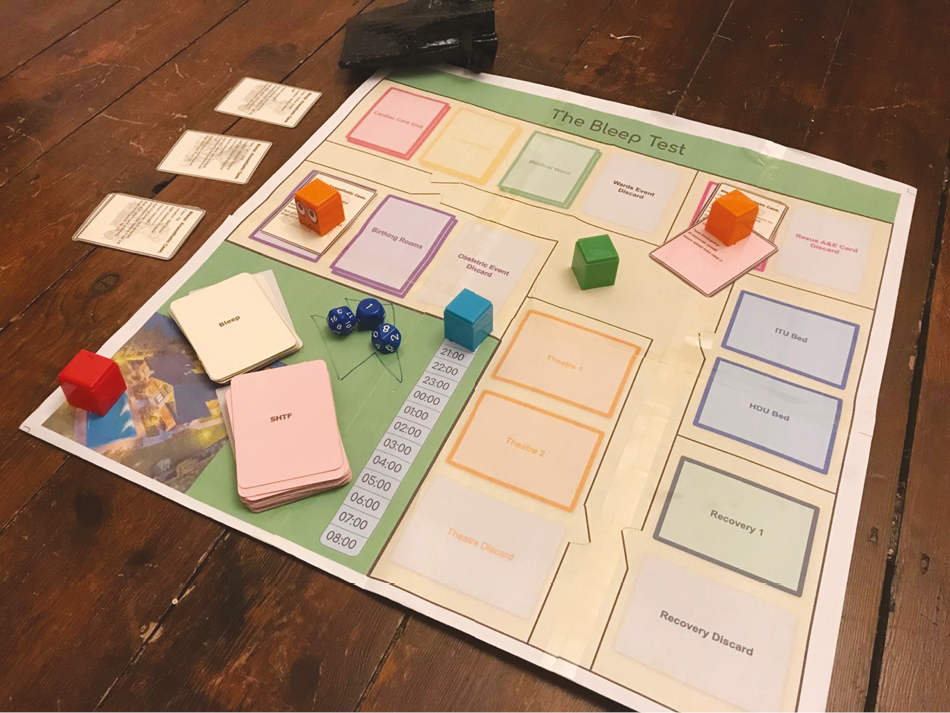
Simulation based medical education can be defined as any educational activity that utilises simulation aids to replicate clinical scenarios [1]. One currently burgeoning field of medical simulation is Tabletop Simulation (TTX). Contrary to other medical simulation methodologies, typically the TTX format has reduced emphasis on novel technologies alongside low clinical and environmental fidelity. To date, the majority of TTX has been implemented in disaster healthcare [2]. However, more recently there has been a surge in TTX which is likely due to accessibility and low development overheads. This mimics a ‘renaissance’ in leisure board industry, ‘Internet fatigue’ being a current dominant theory to explain this trend [3].
Anaesthetic specialty doctor training begins with a focus on clinical aspects of patient care. As time progresses individuals will eventually step up to becoming the most senior anaesthetist within a hospital overnight; running a small team, prioritising care and managing numerous other demands. The step up to the demands of this new role can be appreciable. I order to smooth this learning curve I developed an anaesthetic TTX entitled ‘The Bleep Test’ (Figure 1-A57) to model the pressure of a busy on-call night shift at a Major Trauma Centre.


‘The Bleep Test’ is based within a fictional hospital which contains a finite amount of human and environmental resources. Each turn demands are placed on these resources in the form of tasks which come in the form of ‘bleep’ cards. The player(s) has to decide how to prioritise each of the tasks given the situational constraints and clinical need, as well as future potential anaesthetic tasks that may need an immediate response. Critically this game is designed as a ‘sandbox environment’ with focus on discussion and prioritisation, rather than winning. After playing the game anaesthetic trainees were asked to fill out a survey.
A-hundred percent of anaesthetic trainees gave the game ≥4 out of 5 for 1) how useful, and 2) how enjoyable the learning exercise was. 100% would play it again. Free-text comments included “Incredibly fun game and great way to tease out problem solving and non-clinical skills required on a typical “busy” night shift!” and “good springboard for discussions about the management of anaesthetic emergencies”.
The game was universally enjoyed and could even work as a one-player game. Further work needs to be done in order to quantify confidence improvement for new anaesthetic registrars. However, overall ‘The Bleep Test’ has been incredibly successful.
Authors confirm that all relevant ethical standards for research conduct and dissemination have been met. The submitting author confirms that relevant ethical approval was granted, if applicable.
1. Al-Elq AH. Simulation-based medical teaching and learning. Journal of Family Community Medicine 2010;17(1):35–40.
2. Ward RC, Muckle TJ, Kremer MJ, Krogh MA. Computer-based case simulations for assessment in health care: a literature review of validity evidence. Eval Health. 2019;42(1):82–102.
3. Donovan T. It’s all a game: The History of Board Games from Monopoly to Settlers of Catan. New York: St. Martin’s Publishing Group. 2017. p. 292.